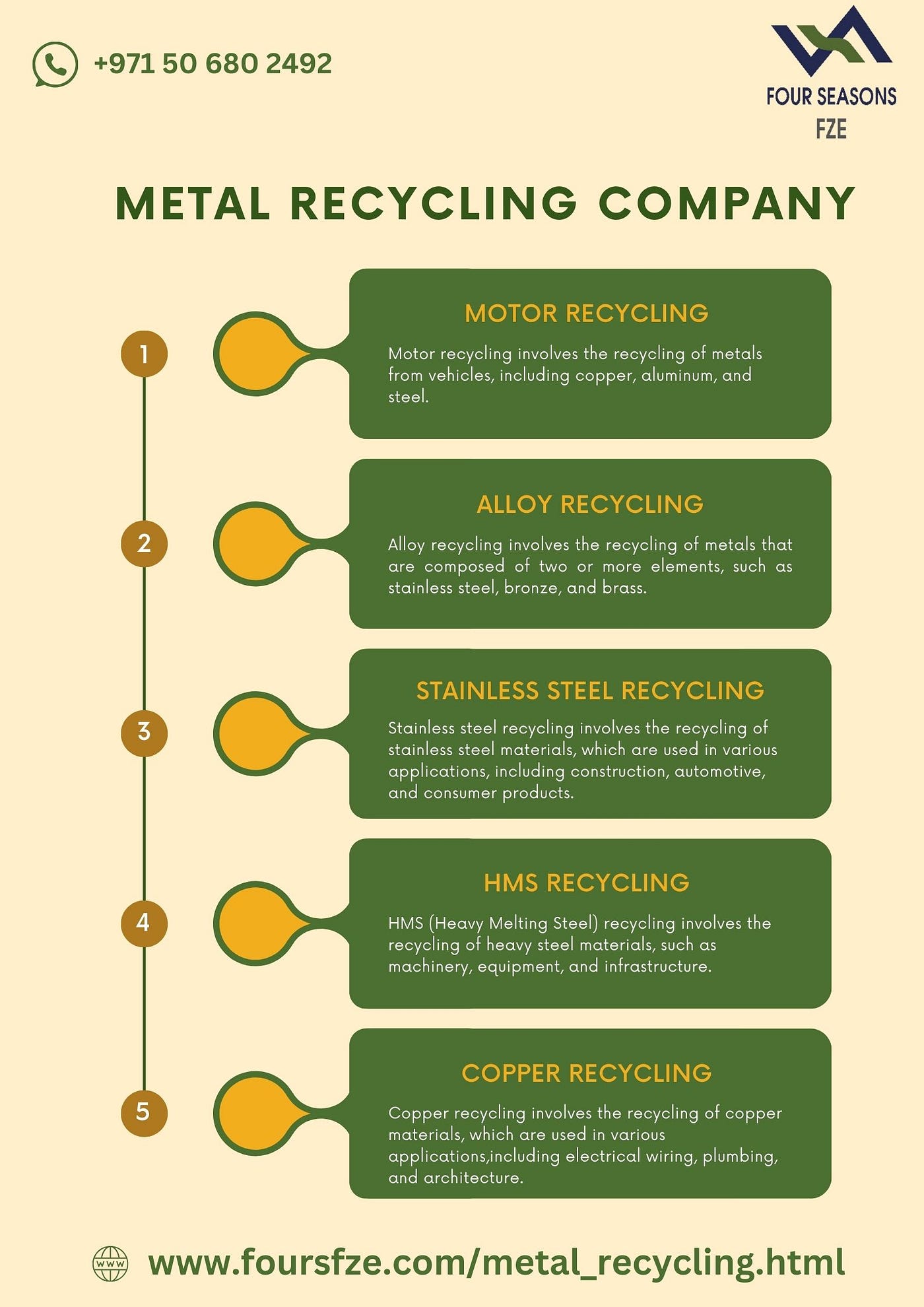The metal recycling industry plays a vital role in the global economy, contributing significantly to the conservation of natural resources, reduction of greenhouse gas emissions, and mitigation of environmental impacts associated with primary metal production. This comprehensive guide will delve into the world of metal recycling, exploring its importance, processes, and various types.
The Importance of Metal Recycling
Metal recycling is an essential practice that offers numerous benefits, including:
- Conservation of Natural Resources: Recycling metals reduces the need to extract and process raw materials from the earth, preserving natural resources for future generations.
- Energy Savings: Recycling metals requires significantly less energy than producing primary metals, resulting in a reduction of greenhouse gas emissions and energy consumption.
- Environmental Protection: Metal recycling helps to minimize the environmental impacts associated with primary metal production, such as air and water pollution, and land degradation.
- Economic Benefits: The metal recycling industry generates significant revenue and creates employment opportunities, contributing to the growth of local economies.
Metal Recycling Processes
The metal recycling process involves the collection, sorting, processing, and melting of metals to produce high-quality raw materials that can be used in various industries. The process typically involves:
- Collection: Metals are collected from various sources, including industrial waste, consumer products, and construction materials.
- Sorting: Metals are sorted based on their type, grade, and quality.
- Shredding: Metals are shredded into smaller pieces to increase their surface area.
- Melting: Metals are melted in furnaces to produce molten metal.
- Purification: The molten metal is purified to remove impurities and achieve the desired chemical composition.

Types of Metal Recycling
- Motor Recycling: Motor recycling involves the recycling of metals from vehicles, including copper, aluminum, and steel. This process helps to recover valuable materials and reduce the environmental impacts associated with vehicle disposal.
- Alloy Recycling: Alloy recycling involves the recycling of metals that are composed of two or more elements, such as stainless steel, bronze, and brass. These alloys are recycled to produce high-quality raw materials for various industries.
- Stainless Steel Recycling: Stainless steel recycling involves the recycling of stainless steel materials, which are used in various applications, including construction, automotive, and consumer products.
- HMS Recycling: HMS (Heavy Melting Steel) recycling involves the recycling of heavy steel materials, such as machinery, equipment, and infrastructure.
- Aluminum Recycling: Aluminum recycling involves the recycling of aluminum materials, which are used in various applications, including packaging, transportation, and construction.
- Copper Recycling: Copper recycling involves the recycling of copper materials, which are used in various applications, including electrical wiring, plumbing, and architecture.
- Drill Head Recycling: Drill head recycling involves the recycling of drill heads, which are used in the oil and gas industry. This process helps to recover valuable materials, such as tungsten carbide and steel.
Conclusion
The metal recycling industry plays a vital role in the global economy, contributing to the conservation of natural resources, reduction of greenhouse gas emissions, and mitigation of environmental impacts. By understanding the importance and processes of metal recycling, as well as the various types of metal recycling, we can work towards a more sustainable future. As the demand for metals continues to grow, the metal recycling industry will play an increasingly important role in meeting this demand in an environmentally responsible manner.


